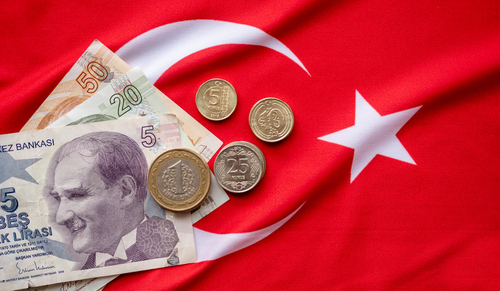

A Turnaround for the Turkish Lira?
To borrow the words of Jim McKay in the wide world of currencies, there is nothing like the Turkish lira to give the trader ‘The thrill of victory, and the agony of defeat’!
Since 2023 began, the Turkish lira has depreciated over 50% versus the US dollar. Most of that depreciation happened after the May general elections.
But a continuation of the recent moves toward more orthodox macroeconomic and regulatory policies, combined with an attractive valuation, could make the Turkish lira one of the better performing currencies on a total return basis in 2024.
This is a Grey Swan that may bring many emerging market currency investors back into the pond and long the Turkish lira.
The Lira Is Massively Undervalued
In terms of valuation on a PPP basis, the Turkish lira shows a deviation from fair value of over 80%. Today’s spot price is 29.00, putting fair value closer 20.0.
Compared to other liquid emerging market currencies, the lira is by far the cheapest by the PPP metric.
The lira appears cheap enough at these levels to minimize the need for further devaluation and act as a positive lever for exports and a tailwind to the balance of payments as the export sector is now very competitive.
In late 2018 the Turkish lira current account deficit turned positive and monetary policy was tightening, the currency outperformed. Are we likely to see a repeat performance?
Turkey’s Monetary Policy Is Normalising
Monetary policy has begun to normalize as policy rates increased from 8.5% in early summer to 40% in December. Indeed, monetary policy activism has been ignited and will likely continue to reduce inflation prospectively.
Inflation Should Moderate
Inflation has been steady, albeit at a very high 60% annualized rate, for the past four months. Given the highs of an annualized rate of 80% in 2022 we are certainly moving in the right direction toward the average of around 20% annualized in the decade prior to 2022.
Further stabilization in the currency would help slow inflation and bring positive real rates of close to 10% in Turkey much sooner than market expectations.
2024 Should See Solid Improvement in Turkey’s Fundamentals
Orthodox policy, regulatory measures, and regional sovereign support have all coalesced to ease external funding risks and negative transmission to downward currency pressure. FX reserves may even grow grow as capital flows to Turkey and the central bank intervenes to stem the tide of TRY appreciation.
Credit growth has slowed to about 50%, from a peak of well over 100%. Given inflation remains around 60%, real credit growth is negative and should be another positive for the balance of payments as credit driven spending weakens in 2024.
The summer of 2024 and arrival of tourism inflows may be part of that final surprise that makes the Turkish lira the best performing currency of 2024.
Yogi Berra must have been referring to the ebbs and flows of the Turkish lira when he said: ‘It’s like déjà vu all over again!’
.
(The commentary contained in the above article does not constitute an offer or a solicitation, or a recommendation to implement or liquidate an investment or to carry out any other transaction. It should not be used as a basis for any investment decision or other decision. Any investment decision should be based on appropriate professional advice specific to your needs.)
